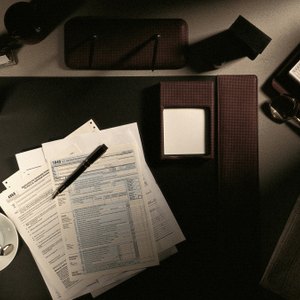
IRS Form 1041 is the tax return used for estates and trusts. According to the IRS website, Form 1041 is required for estates and trusts that have a gross income of $600 or more or that lists a nonresident alien as a beneficiary. The form must be filled out by the executor of an estate to report any income, gains, losses or money distributed to the estate's beneficiaries. It also is used to report income tax and employment taxes on the wages of employees who worked in the household of the estate during the tax year.
Enter the information regarding the estate in Section A of Form 1041. The name of the estate or trust, which will be an individual's name in most cases, as well as the name of the fiduciary, or the executor, are required in Section A, along with an address where the executor can be reached.
Provide information regarding income made by the estate in the “Income” section of Form 1041. Income that must be listed includes any rental or sales income made off of properties belonging to the estate, and any business income made by companies that belong to the estate.
List deductions in the “Deductions” section of Form 1041. Like any income tax form, deductions that can be taken on Form 1041 include donations to charities and any fees for attorneys or accountants who help with tax preparation. Unlike other income tax forms, however, you can also include any fees incurred by the executor in preparation of the tax forms on the “Fiduciary fees” line.
Add up the tax payments already made during the tax year in the “Tax and Payments” section. Items that should be listed in the “Tax and Payments” section include income taxes already withheld and any quarterly payment tax payments made on behalf of the estate.
Use the second page of the form to help you calculate charitable deductions, income deductions and tax deductions. Also, make sure you complete the questions included in the “Other Information” section on the second page of the form by checking either the “Yes” or “No” box beside each question.
Sign the bottom of the first page of the form if you are the form's preparer. Separate signature lines are provided for fiduciary preparer’s and paid preparer’s, such as accountants or attorneys. Make sure that you sign the proper line according to your status.
References
Writer Bio
Alexis Lawrence is a freelance writer, filmmaker and photographer with extensive experience in digital video, book publishing and graphic design. An avid traveler, Lawrence has visited at least 10 cities on each inhabitable continent. She has attended several universities and holds a Bachelor of Science in English.

